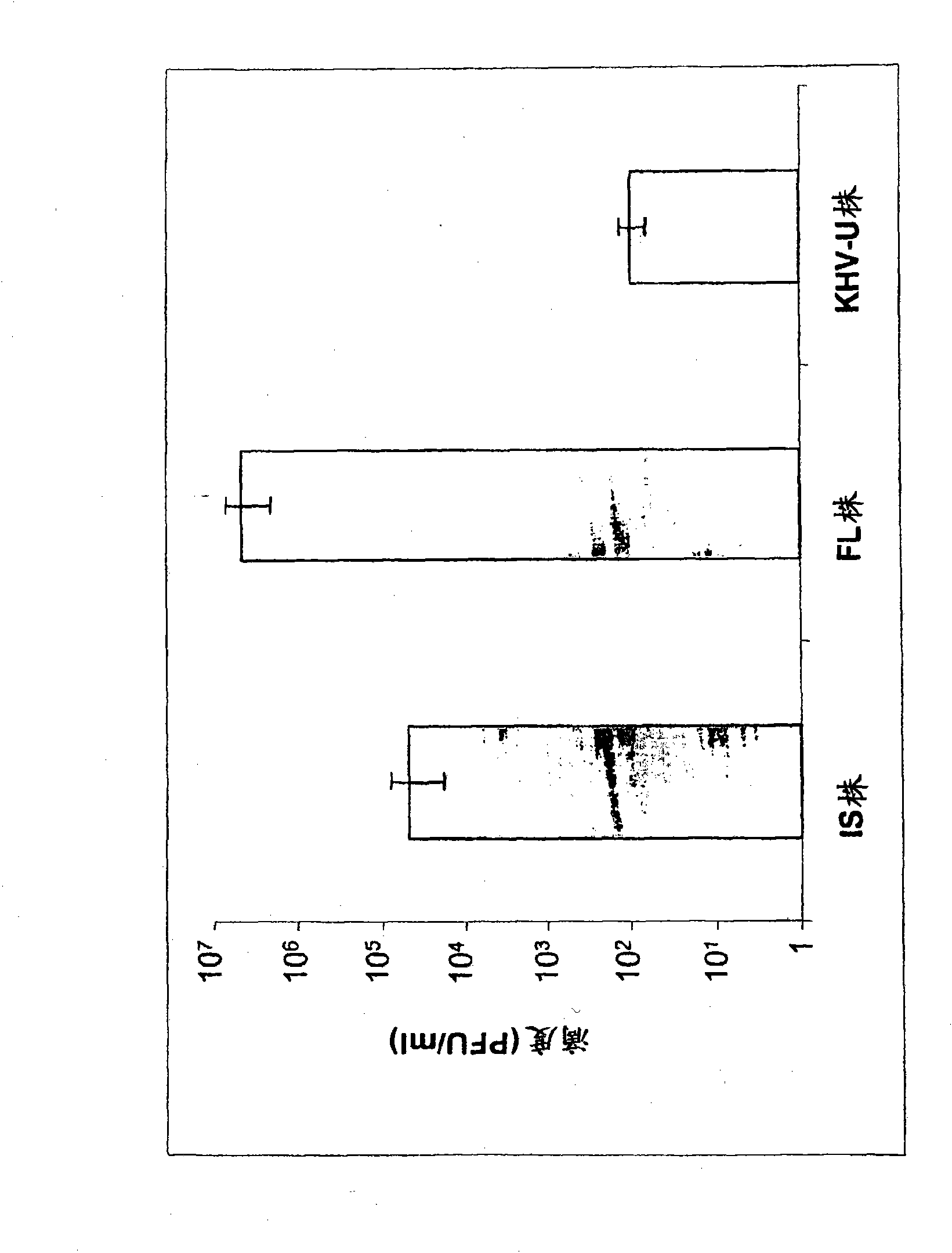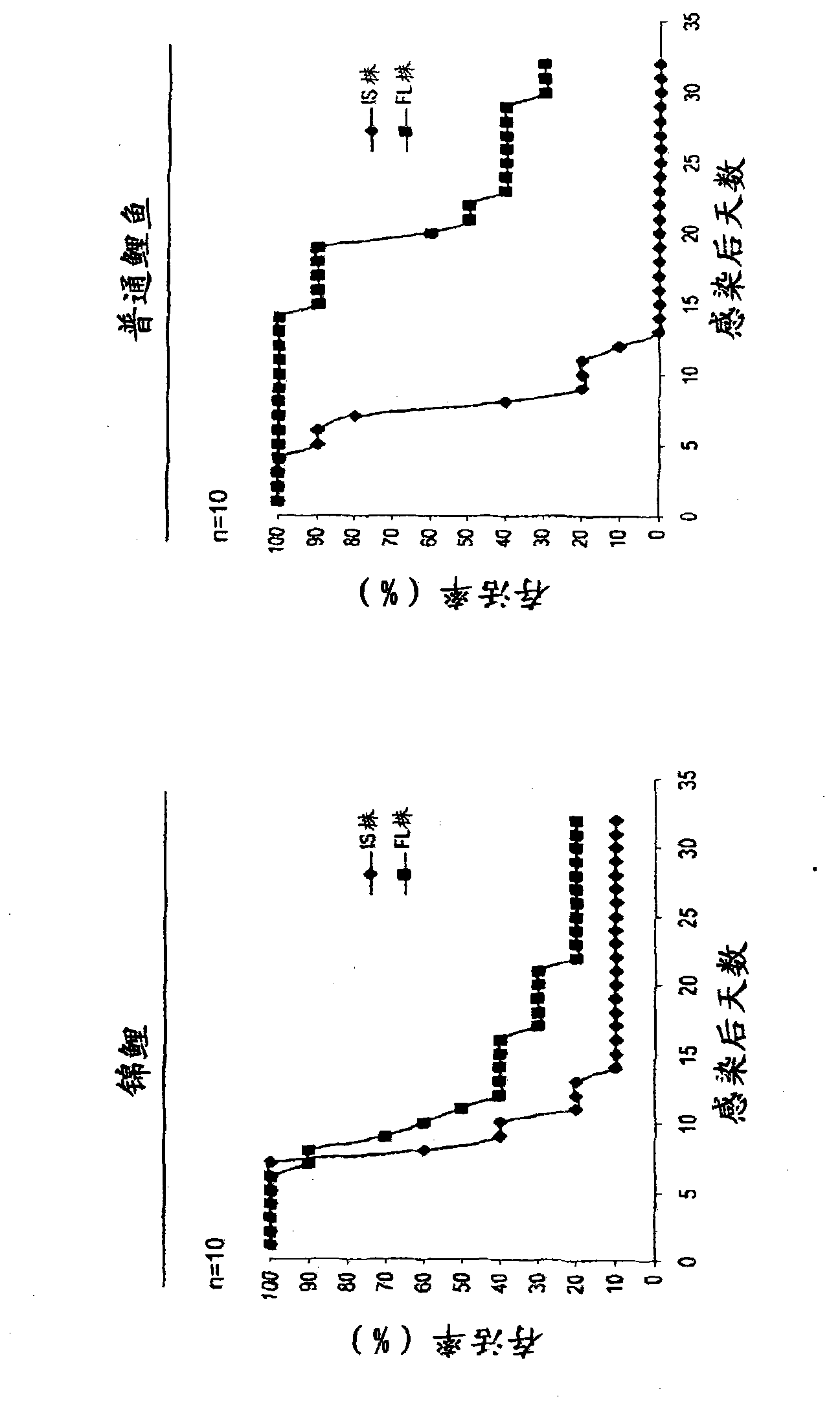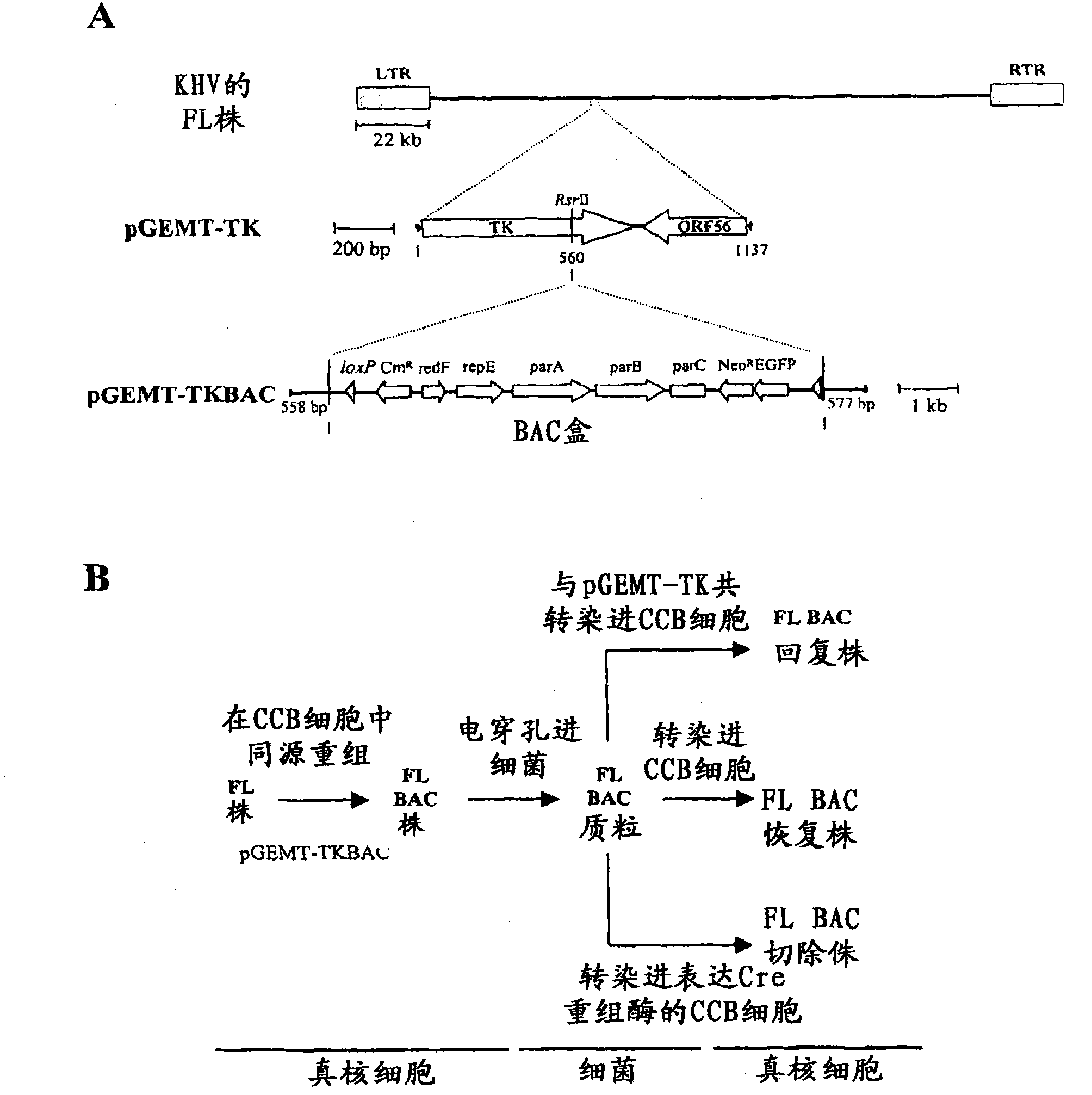Recombinant koi herpesvirus (KHV) or cyprinid herpesvirus 3 (CyHV-3) and vaccine for the prevention of disease caused by KHV/CyHV-3 in cyprinus carpio carpio or cyprinus carpio koi
A kind of koi herpes virus, the technology of koi herpes virus, be used in recombinant koi herpes virus (KHV) or koi herpes virus 3 (CyHV-3) and be used for preventing common carp or koi from being caused by KHV/CyHV-3 In the field of vaccines for different diseases, it can solve the problems that cannot be ruled out, and the decision mechanism of attenuation is unknown.
- Summary
- Abstract
- Description
- Claims
- Application Information
AI Technical Summary
Problems solved by technology
Method used
Image
Examples
Embodiment 1
[0311] Example 1: Production of KHV FL Strains with Parental Strains Derived Recombinant Attenuated Vaccines inherent characteristics
[0312] The growth characteristics of the wild strain in vitro and the virulence in vivo were tested. At the end of this screening process, the KHV FL strain is selected as the parental strain from which the derived attenuated recombinant strain was derived. figure 1 Showing the growth characteristics of the KHV FL strain compared to two KHV reference strains (IS strain and KHV-U strain), the FL strain replicates more efficiently in vitro. figure 2 It is shown that the KHV FL strain is less pathogenic than the KHVIS strain in vivo. Indeed, the IS strain and the FL strain caused 90% and 80% mortality, respectively, when tested on 7 g of koi ( figure 2 ). Interestingly, when assayed on 2 g of common carp, the FL strain induced disease delayed by two weeks compared to the IS strain. With a view to the 2-week delay observed compared with ...
Embodiment 2
[0313] Example 2: Cloning of the KHV genome in Escherichia coli
[0314] The genome of the KHV FL strain was cloned as a BAC to produce a KHV recombinant. use as image 3 The method described to back clone KHV. The first step in the method requires insertion of the BAC cassette into the KHV genome by homologous recombination in eukaryotic cells. Since the genome of KHV was only partially sequenced when the inventors started their research, the insertion site of the BAC cassette was chosen at the end of the TK gene ( image 3 A). KHV FL BAC strain ( image 3 B). The ability of the latter virus to grow in the presence of G418 allowed it to be isolated from the parental strain. In addition, EGFP expression induced by the KHV FL BAC strain can be used to monitor the screening process. The virus was passaged three times in the presence of G418 to obtain a pure KHV FL BAC population. The molecular structure of described KHV FL BAC strain is confirmed by the combination of ...
Embodiment 3
[0315] Example 3: Stability of the KHV genome in E. coli
[0316] BAC plasmids are usually propagated in bacteria with a recA mutation that minimizes recombination. But the large size and complex structure of the KHV genome can lead to the relative instability of the BAC plasmid (Ilouze et al., Microbiol. Mol. Biol. Rev., 70(1), 147-156, (2006)). To assess the stability of the KHV genome as a BAC plasmid, bacteria harboring the KHV FLBAC plasmid were continuously cultured for 20 consecutive days, representing approximately 36 passages per day. After various periods of cultivation, BAC plasmids were extracted and digested with SacI for characterization ( Figure 6 ). No differences among plasmids were observed at various stages of growth, demonstrating the high stability of the KHV genome in E. coli.
PUM
 Login to View More
Login to View More Abstract
Description
Claims
Application Information
 Login to View More
Login to View More - R&D
- Intellectual Property
- Life Sciences
- Materials
- Tech Scout
- Unparalleled Data Quality
- Higher Quality Content
- 60% Fewer Hallucinations
Browse by: Latest US Patents, China's latest patents, Technical Efficacy Thesaurus, Application Domain, Technology Topic, Popular Technical Reports.
© 2025 PatSnap. All rights reserved.Legal|Privacy policy|Modern Slavery Act Transparency Statement|Sitemap|About US| Contact US: help@patsnap.com



